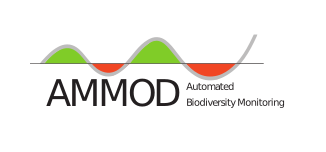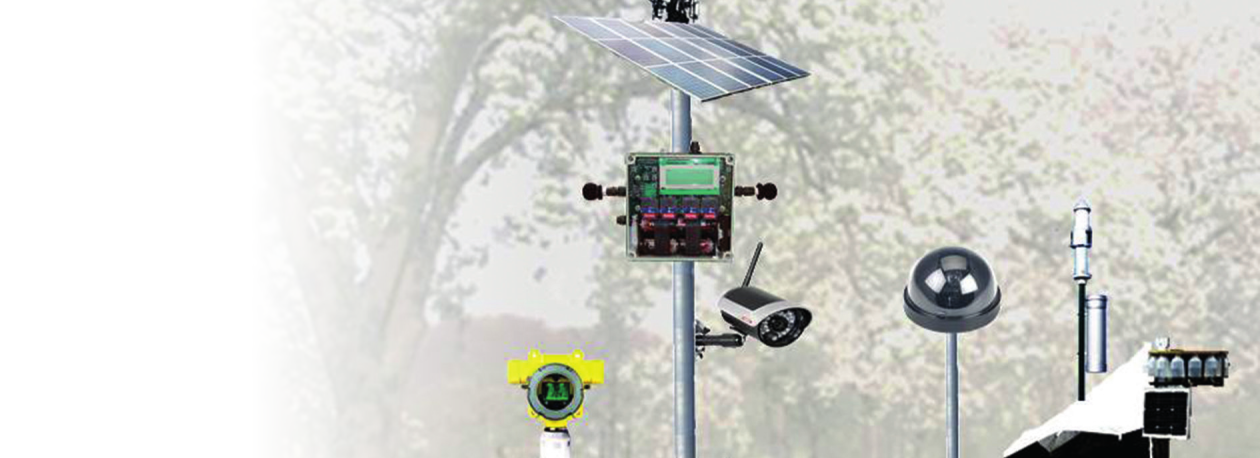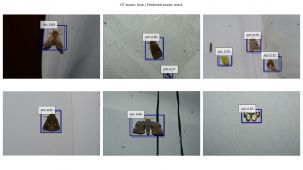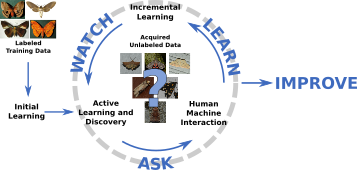AMMOD: Automated Multisensor station for Monitoring Of species Diversity


Team: Paul Bodesheim, Dimitri Korsch, Daphne Auer, Julia Böhlke
Joint Research Project
Climate change is affecting ecosystems all over the world, causing irreversible loss of biodiversity. Since humans are the main contributors to the situation, it is our responsibility to closely monitor the effects of climate change in order to take action for the living beings in our environment in a targeted way.
The goal of all AMMOD project partners is therefore to monitor biological diversity in Germany using new technologies. To this end, prototypes for so-called AMMOD stations are to be set up in German forests within the 3-years project period. These are equipped with sensors for recording animal sounds and plant emissions, with animal cameras for birds, mammals and insects, and with automated insect and pollen sample collectors for monitoring by DNA barcoding. These recordings will be used to generate a solid data pool that will enable the analysis of change and possible trends. For instance, we want to use the detected species to determine their population and record the change over a long period of time.
The visual information will be analyzed, in part, by the the researchers at the Computer Vision Group in Jena. The Moth Scanner and the Novelty Detection, Life-Long Learning and Classification sub-tasks of the visual AMMOD System (visAMMOD) will be tackled here.
Find more information on the project homepage of the joint research project. It is funded by the Federal Ministry of Education and Research (Bundesministerium für Bildung und Forschung).
Individual Projects

Moth Scanner
Dimitri Korsch
One camera, the so-called SpeciesMothCam, will take high-resolution images of insects that rest on an illuminated screen at regular intervals. The goal of monitoring is not to detect every species, but to describe trends in local insect populations. Seasonal activity differences of single species, the correlation with weather conditions and with vegetation phenology are important for ecological analyses. The SpeciesMothCam will deliver this type of data. The aim is to implement methods that enable an efficient detection of regions of interest (ROIs) on the screen and a classification of the species in this fine-grained setting. Taxonomic experts will help in the confirmation of the correct identification.
Time frame: 2019 – 2022

Novelty Detection, Life-long Learning and Classification
Daphne Auer, Julia Böhlke
Another camera, the so-called SpeciesSiteCam, will capture stereo images and videos mainly of terrestrial animals (mammals) using motion sensors. To enable image acquisition during night and twilight, infrared illumination is switched on. Our goal is to build robust classification models that can identify different species. Since there are only a few annotated training image databases, one goal is to compile a first workable system that exploits the image data present in the World Wide Web. Julia Böhlke has written her Bachelor thesis on this topic which is also summarized in a paper. Active learning will play an important role to integrate unlabeled sample sets. Furthermore, a core element of AMMOD is novelty detection, an alerting mechanism in case that a so far unknown species has been recorded by the monitoring devices.
Time frame: 2019 – 2022

